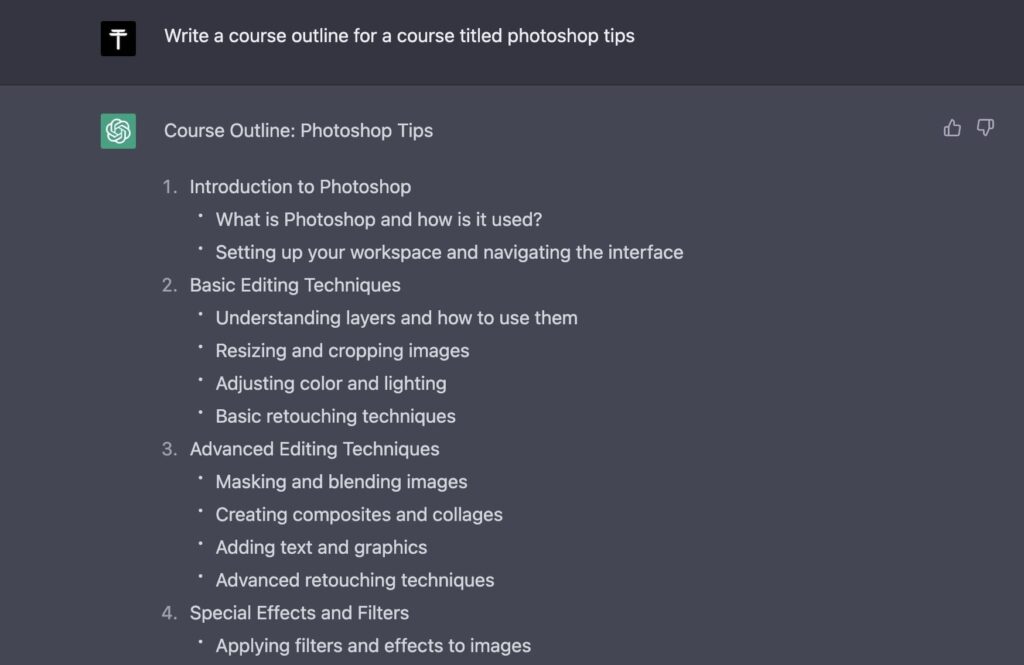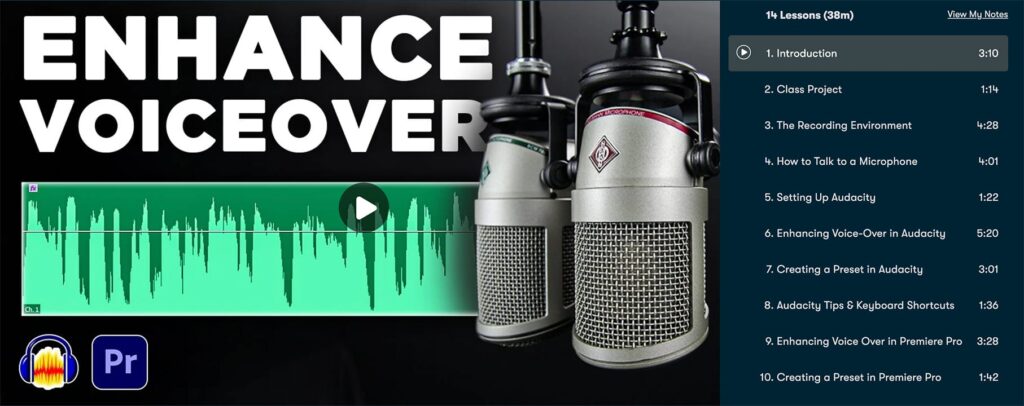Creating an online course could be a great way to make extra money online.
The world is moving toward online education from traditional education every day that passes.
So why not jump on the rising wave?
Having a course that solves a problem you’ve overcome in the past could be one of the best ways to earn passive income.
But creating an online course costs money right?
Wrong.
You see, there are a lot of free online tools that can help you script, record, edit, and publish your online course completely for free!
Here’s how:
How to Create a Course for Free?
In order to make a course for free you can use AI tools to help brainstorm ideas, stock-video websites to make your course footage more interesting, devices that you already own for recording the voice-over, visuals, and your computer screen, and edit the course with free video editing software.
There are 8 total steps to take to make an online course for free:
1. Choose a free Course platform
While there are many course creation platforms out there, most of them cost money to be able to host your course.
However, there are three that are free to use and publish your course: Skillshare, Udemy, and Payhip.
If you’re making your first online course I recommend going with Skillshare for 2 reasons:
- Skillshare has a minimum course length of 10 minutes (30 minutes on Udemy).
- Skillshare pays for the number of minutes people watch your course (Udemy offers a one-time payment model for courses).
- It has a built-in audience looking for courses
Visit Skillshare.
2. Pick a course topic
You don’t need to be an expert to make a course – teach something that you know.
Think of a problem that you’ve overcome.
Think of something you could teach your old self.
Think of a transformation that you’ve gone through.
Something that’s obvious to you could be life-changing to others.
It can be something as simple as how to make a delicious meal or how to clean up your computer.
The main thing to keep in mind is that you’re teaching “how I do something” and not “how to do something”.
Thinking like this will make it so you don’t put pressure on yourself to be an expert at something.
If you find it hard to come up with a course idea, you can use AI wirting tools to help you out.
3. Write an outline or a script (with AI)

In order to make your free course more engaging it’s a good idea to have a structure and script out your course.
Google Docs, Apple Notes, Notion, or any other free text editor is a great place to start outlining your script.
However, you can write your script a lot faster using AI tools like Rytr.ai or ChatGPT.
Rytr.ai lets you input the topic of your script and generates an outline using artificial intelligence.
You can also ask the AI to expand on what it has already written.
Since AI isn’t perfect, it’s a good idea to use AI as a general guide but write the script or the outline of the course yourself.
4. Record the course for free
If you’re reading this blog post, chances are you have a device with a built-in camera, microphone, and screen recorder.
When creating free online courses audio quality is more important than video.
So if you have a phone with a camera, you can record your course for free without worrying that it doesn’t have the best camera quality.
When it comes to audio, you can also record it with your device’s built-in microphone for free.
Android phones, iPhones, Windows, and Mac computers all have voice-recording software built-in.
When it comes to the audio quality there are a few things to consider:
- A quiet recording environment (best if quiet and no reverb)
- How close the microphone is to your mouth (best if 15cm away)
- Background sounds (best if no laptop fans, no ticking clocks, no AC, etc.)
View course on Skillshare.
5. Edit the course for free
The best software to edit your course for free is DaVinci Resolve.
It’s a full-fledged non-linear video editing software that has all the features that most advanced video editing tools like Final Cut Pro or Premiere Pro have.
However, DaVinci Resolve might be too advanced for beginners looking to edit a course for free without any prior video editing experience.
Simpler alternatives are iMovie (available on all Apple computers for free) or Canva (available to everyone for free).
Canva has a built-in video editor and it runs in your browser so you don’t have to have a powerful computer to handle video editing.
6. Optimise course for SEO
Once you plan, record, and edit your course material it’s time to optimize it for SEO.
If you’re uploading the course to Skillshare you can use their guide on how to improve your course’s SEO.
Here are a few key things to keep in mind:
- Include the main search keyword in the title, class project description, and the first sentence of your class description.
- Use the main search keyword at least three times in your course description.
- Include relative keywords that relate to your primary, target keyword.
- Make sure to write a long detailed description of the course.
The Udemy analytics tool will show you:
- Student demand.
- A number of courses exist for this keyword.
- Median monthly revenue for this topic of courses.
- Top monthly course revenue.
7. Create a course thumbnail
When it comes to making a thumbnail for your online course it’s very similar to creating a thumbnail for a YouTube video.
You can create the thumbnail for free using Canva.
The general rules that apply to YouTube thumbnails also apply to your course thumbnail.
Your thumbnail ideally should:
- Pop out from the rest.
- Intrigue the viewer.
- Should not repeat the title.
- Have only 2 or 3 main elements.
- Should not waste space.
- Use a maximum of 3 words.
- Introduce intrigue but don’t clickbait.
8. Upload the course to Skillshare or Udemy
When it comes to uploading your course to Skillshare or any other platform, it is really straightforward.
The platform guides you through every step and even provides useful articles to make sure your course is perfect.
If you choose to use Payhip to host your course you can upload your video lessons to YouTube and embed them in the course player for free.
I found that it’s easier to upload a course to Skillshare compared to Udemy because Skillshare has a slightly better user interface for course creators.
Keep in mind that when you finish making your course and upload it either to either Udemy or Skillshare there will be a review process after which you might be asked to tweak some parts of your course if they don’t adhere to the guidelines of these platforms.
However, if you use Payhip to host your course, then there will be no review process because this platform doesn’t have a built-in audience.
Was This Guide on How to Create a Free Course Useful?
Congratulations! You’re on your way to creating your first online course for free.
Meanwhile, you can check out these helpful resources to learn even more about different course creation platforms and other ways of making passive income online:

